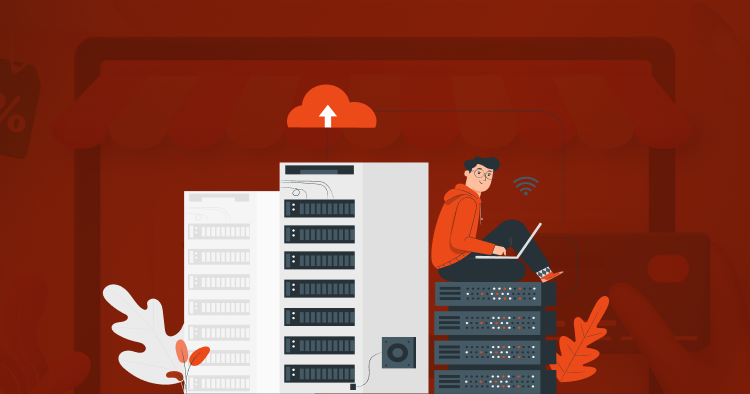What is Magento?
Ever thought about how simple it is for you to go to an online shop, browse through their variety of categories, filter the items, pay, and receive it at your doorsteps in a few days. eCommerce websites make it feasible to purchase the required items instead of going to the shop physically. To create an eCommerce website, Magento – a leading eCommerce platform is such a breeze to the merchants.
Magento is an open-source platform written in PHP which provides customers with a flexible shopping cart experience, as well as control over the interface, content, and functionality of their online store. Magento provides scalable eCommerce solutions, catalog browsing, and reports management powering over 25% of online stores
HISTORY OF MAGENTO
Magento – an open-source eCommerce platform, as well as Magento development company, started in early 2007 initiated by Roy Rubin and Yoav Kutner who began a web design company named Varien. Around 2010, the company name Varien was changed to Magento, as the Magento platform was more recognizable than it’s the parent company.
The name Magento was derived from the color magenta which was the first name choice by the founders for the company but unfortunately, the domain name magenta.com was already registered, hence Magento name popped up.
The next major milestone in Magento’s life was in 2011. In June 2011, eBay announced that it would be acquiring the entire Magento community. Around November 2015, Magento was spun as an independent private community after the split of PayPal from eBay and Magento 2.0 was finally released with new APIs that made the integration of advanced services easier for the developers.
To offer out-of-box functionalities for large businesses, the Magento Enterprise Edition was introduced in 2016. The history of Magento is not a linear one, in June 2018 Magento was acquired by Adobe for $1.68 Billion.
DIFFERENCE BETWEEN MAGENO 1 AND MAGENTO 2
Although Magento 2 has been making waves in the domain of eCommerce, many eCommerce business owners are still probably pondering whether upgrading to Magento 2 is worth it.
Without any doubt, there are obvious differences between both versions. Magento 2 comes with a lot of improvements in areas of coding, functionality, and user experience. Let us see the most prominent ones.
1. Speed & Performance
Consumers desire to have Time to first byte (TTFB) of 100 milliseconds, online users abandon websites if it takes a longer duration to load.
Magento 2 loads the homepage, category pages, and product pages load in less than 1.5 seconds, even without using frontend caching. Magento 1 has good speed but the good gets better in the case of Magento 2.
In Magento 1, every time a product is added to the cart, the whole page reloads that has a bad impact on the performance, whereas in Magento 2 with Ajax add-to-cart, the system doesn’t load the whole entire page, which enhances the user experience.
According to dev.to, Magento 2 checkout is 38% faster than Magento 1.
2. User Experience
The admin panel in Magento 2 has an intuitive layout. It allows searching for information easily, navigates to all parts of the admin panel and manages your stores more efficiently. Magento 2 comprehensive dashboard helps users to monitor the current state of their business.
By monitoring on-site behavior, we can determine what content our customers want to see, what discounts and offers should be given to them. Creating products in the admin panel is easier than before with 4x faster product import capabilities as compared to Magento 1.
To enhance the user’s experience, Magento 2 emerges with new responsively designed (and SEO-friendly) themes.
3. Extensions
Generally, while developing an eCommerce website there is a requirement to have so many extensions for multiple functional reasons. These extensions are absolutely functional until their fields do not overlap, the problem was that the downloaded extensions conflict when two or more extensions try to rewrite the same functionality.
In the case of Magento 1, one needed to resolve this manually and it can be very time consuming to determine where the conflict is and how to fix it.
With Magento 2 upgrade, extensions allowed to overlap core code rather than override it to help reduce conflicts among extensions that change the behavior of the same class or method.
4. Pricing
The budget plays a vital role in the selection of an eCommerce framework.
The community editions of Magento 1 and Magento 2 are free but come without any support, whereas the enterprise edition is not free.
A Magento 1 Enterprise Edition license cost starts at $18,000 yearly, whereas a Magento 2 Enterprise Edition license cost starts at $22,000.00 annually for merchants generating less than $1 million and pricing tiers up based on revenue.
- Architectural differences
The notable changes in Magento 1 and the enhanced version is due to the architectural update.
Well known Architecture differences are:
- Magento 2 supports the latest PHP versions. These versions include security improvements that affect the store’s speed.
- Reduction in unnecessary browser’s operations on the client’s side due to bundled and minimized JavaScript.
- Better browser caching for static content.
Is Magento a CMS?
Magento is one quicker developing e-commerce script, an open source CMS that utilizes MySQL and Zend PHP databases. An element rich stage it gives the online traders the influence to control the look, content just like the functionality of the e-commerce business website they claim.
Coming in with an exceedingly instinctive administrative interface, it encourages extraordinary search engine improvement, amazing promoting just as inventory management so the online vendors have the remarkable capacity to make or alter sites that best suit their business needs that are different from each other.
Magento open source CMS platform offers expanded control regarding marketing to the advancement and many more, an increased return on investment which prompts expanded development. There are different versions available in Magento thus you could choose the one that best accommodates your necessities. Magento is, in fact, an extreme e-commerce solution for incredible progress!
Is Magento Free or Paid?
Magento has two versions – Community and Enterprise – it offers various dimensions for various requirements. The undeniable appeal of the Community release is it is free, yet numerous organizations really discover Community superior to Enterprise since it better suits their necessities. The truth is both have their advantages. To pick which is best for you, you have to know your requirements and what the two variants offer.
Magento Community Edition (free)
Magento Community Edition is the ideal stage for the new business store, or if you want to test and figure out how to create an online store starting from the earliest stage. Magento claims the biggest and most dynamic network of developers and merchants on the planet.
Magento Enterprise Edition (Premium)
Magento Enterprise release is the premium paid version of Magento. Mainly it is utilized by greater online stores that need advanced features and increasingly adjustable options. The Enterprise release is totally upheld by the Magento team. Endorsers get full help by telephone and email. Pricing additionally incorporates security refreshes, extraordinary features, and elite item upgrades.
What does Magento Cost?
- Magento Open Source
-
-
- What does Magento Cost?
-
-
- Magento Open Source Magento Open Source is a free release of the platform intended for developers and independent companies. It can be downloaded and utilized totally free of cost. In any case, introducing a Magento Open Source web store goes beyond downloading and installing the software. Extra expenses for coding, design, and hosting will be additionally included. From our own understanding, the cost for an essential Magento site that incorporates standard features, a straightforward free theme and no joining with any outside frameworks and services begin from around $15,000.
-
- Magento Commerce & Commerce Cloud Magento Commerce & commerce cloud both provide advanced features that provide merchants with a huge turnover. The price for using these two versions depends on net gross income revenue: Data source: Graybox So if anyone wants to install paid Magento then its license cost starts from $22,000 and can reach to $190,000 max per year for the merchants that sale over $25,000,000 and choose the cloud version.
- Magento Commerce & Commerce Cloud
Magento Commerce & commerce cloud both provide advanced features that provide merchants with a huge turnover. The price for using these two versions depends on net gross income revenue:
According to the Data source: Graybox
So if anyone wants to install paid Magento then its license cost starts from $22,000 and can reach $190,000 max per year for the merchants that sale over $25,000,000 and choose the cloud version.
What are Magento Products?
Magento has different item types which all have totally or marginally various functions. At times you may be stuck between various product types, being confused which precisely is required.
Indeed, even in the case that you are utilizing Magento for quite a while, you probably won’t be familiar with every one of the individuals of Magento items, for example, do you realize how a grouped item is not the same as bundled?
Magento has 6 distinctive product type profiles to browse while making another product.
Here is likewise every product type clarified: Individualities acquainted
1. Simple Product
It is the most broadly utilized product kind. This type of product is used when you need to have a simple product and no particular options are required. No extra choices to pick. E.g: Models: toys, DVDs etc.
2. Downloadable Product
As you get the idea from the title, this item has a downloadable partner. Consider an MP3 file or some Magento extension. Downloadable item does not permit choosing a delivery technique at checkout, essentially because transportation isn’t required and the customer gets purchased substance immediately.
3. Virtual Product
It’s not physical entries, they cannot be downloaded and shipped. It’s a better way to sell your intellectual products such as warranties, subscription, etc or services.
4. Configurable Product
A configurable item resembles a simple product with drop-down arrangements of options for every variety. Every alternative is really a different simple product with sole SKU, which makes it likely to follow stock for every product deviation.
5. Grouped Product
In Magento, this type of product permits to sell goods as a unit in your Magento. You can likewise show what number of everything you need. Either you can use one product or an entire set.
6. Bundle Product
Utilizing it you can likewise sell an item as a bundle, however, in contrast to a grouped item, you can’t avoid any of its segments. Products related to it can’t be sold independently and you can just choose which precisely choices from offered you like. For Example, a customer can take different processors or memory of a laptop.
What are the benefits of using Magento?
If you’re shopping around for the best eCommerce solution, Magento might be for you.
- Custom web design/ interface
In Magento, there is a collection of CSS customization choices prepared to use for your website architecture. Also, the Magento support community may give you significant data on the most recent patterns and tips on responsive web design. - Mobile-friendly nature
Understanding that individuals these days will in general buy things utilizing their advanced mobile phones, Magento enables you to assemble responsive sites that are visible on tablets, smart devices and other cell phones with no problem. - Flexible hosting options
In contrast to different platforms, Magento E-business Website Development gives you the opportunity to remain with any hosting solution supplier of your decision. - Multi-currency & language support
While most of the current E-business solutions have no support with respect to different languages and currencies, But Magento E-business site improvement allows all languages and currencies over the globe. - Third-party integration
By utilizing Magento, you can integrate your store/site with various payment gateways famous in the world without much of a stretch, like PayPal, Google Shopping, MailChimp, eBay, QuickBooks, and some more. - Limitless Options Magento is an unbounded web-based solution. It is known for its quick adaptability and customization. Magento gives advanced arrangements in a lot more simple way. Magento has an all-around welcoming network and whenever there is any new updates or security fixes to the platform, redesigns and free help is accessible.
Final Thoughts
Magento is a standout amongst the most prevalent eCommerce platforms in 2019 and Magento pricing is affordable as well. It is very outstanding for the highlights and capacities it offers. It offers ground-breaking third-party integration abilities, SEO same as built in best Shopify SEO features, and adjustable improvement.
It is additionally an open-source stage with an enormous number of plugins and adaptable themes accessible to utilize. It is the best eCommerce solution for a wide range of eCommerce stores in 2019.
FAQs:
Shopify wholesale app development company vs Magento B2B e-commerce platform: which one is offered the best app store optimization features?
When it comes down to the app store optimization features, Shopify will take the lead. This is mainly because the Shopify B2B app development has a wide range of built-in SEO features.
RELATED BLOGS:
Magento 1 End of Life – Risks of staying on Magento 1
End of the line for Magento 1 – Why Magento 1 to Magento 2 Migration is a must
What are the Best Magento Alternatives and Top Magento Competitors?







